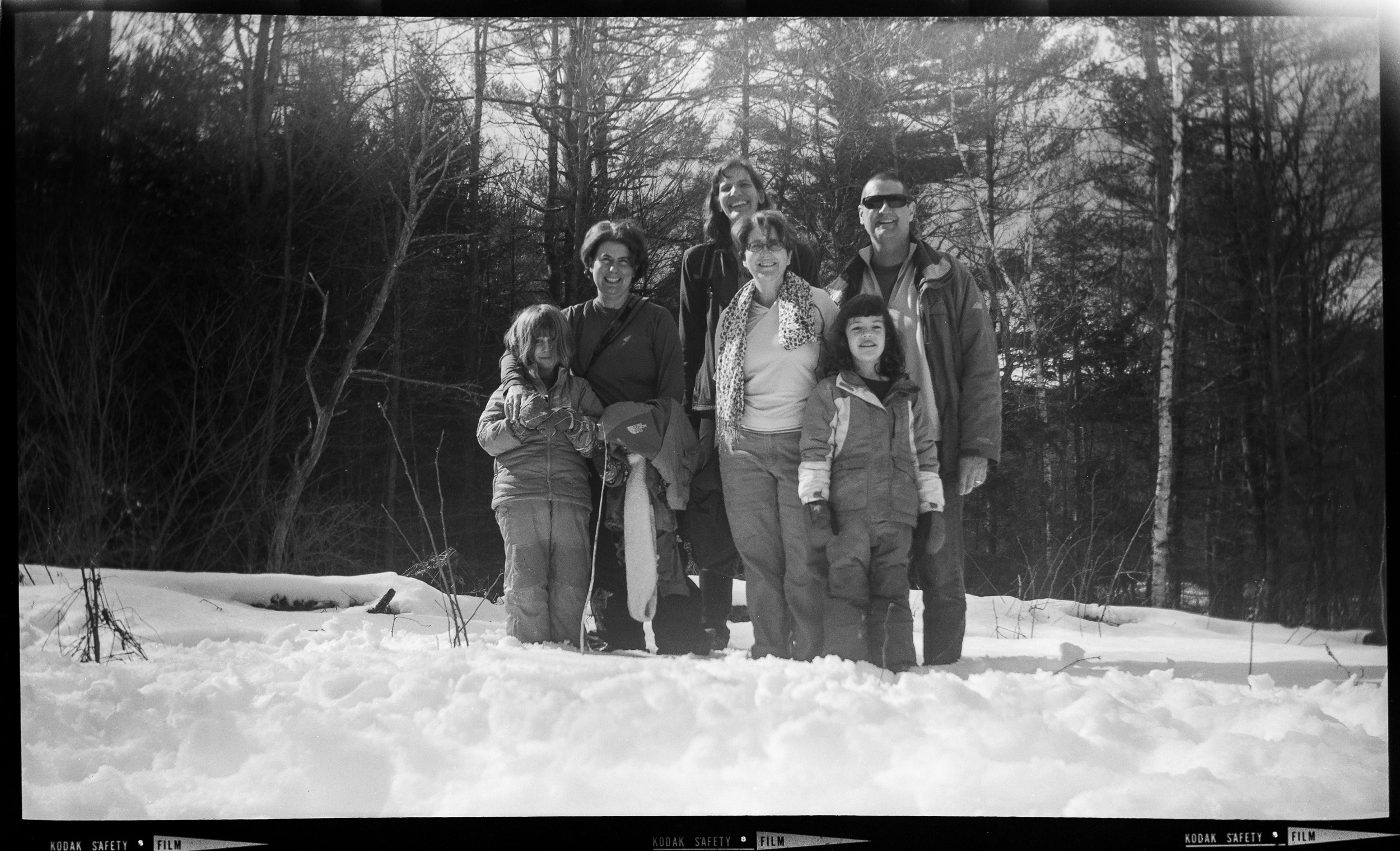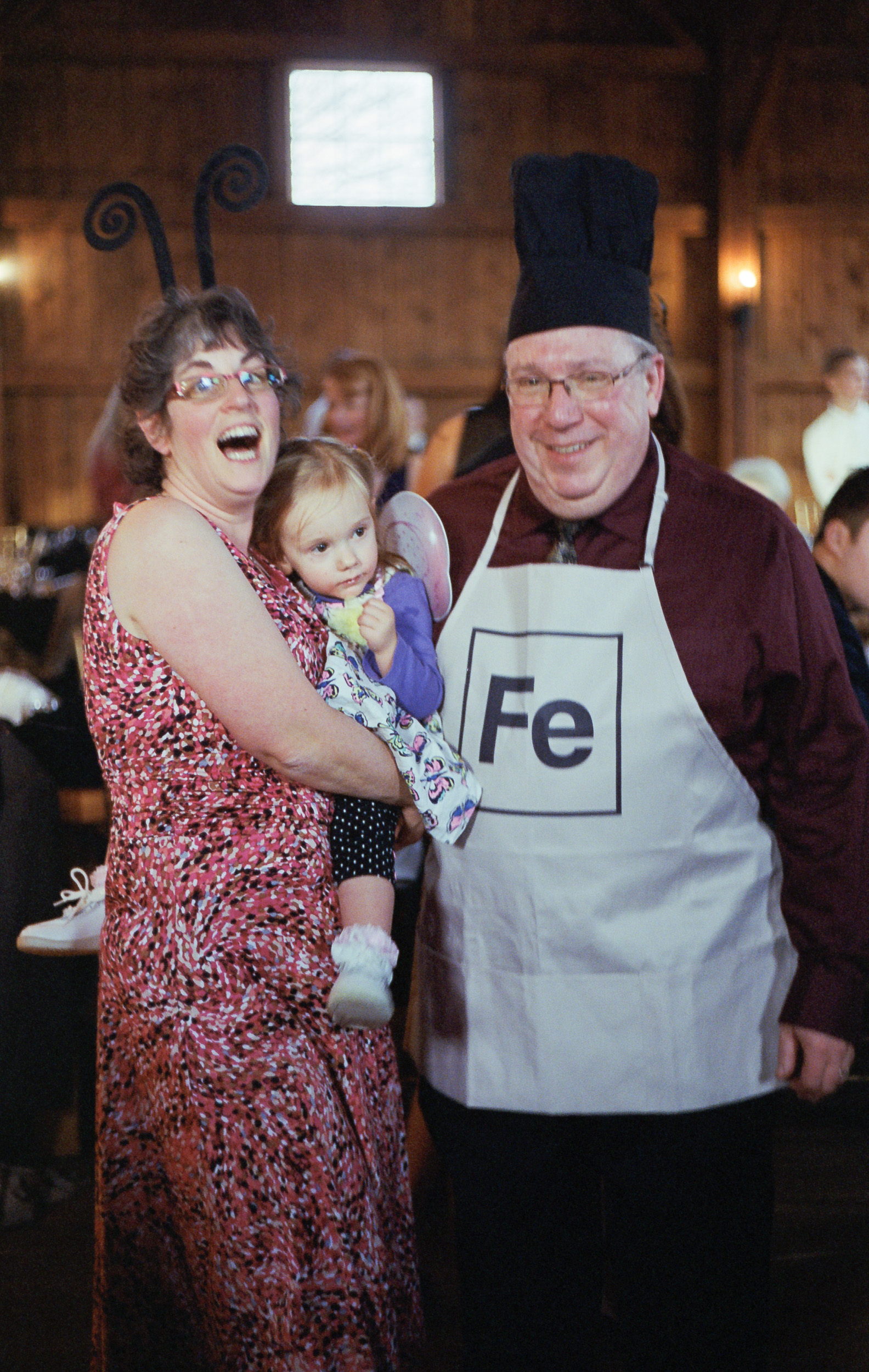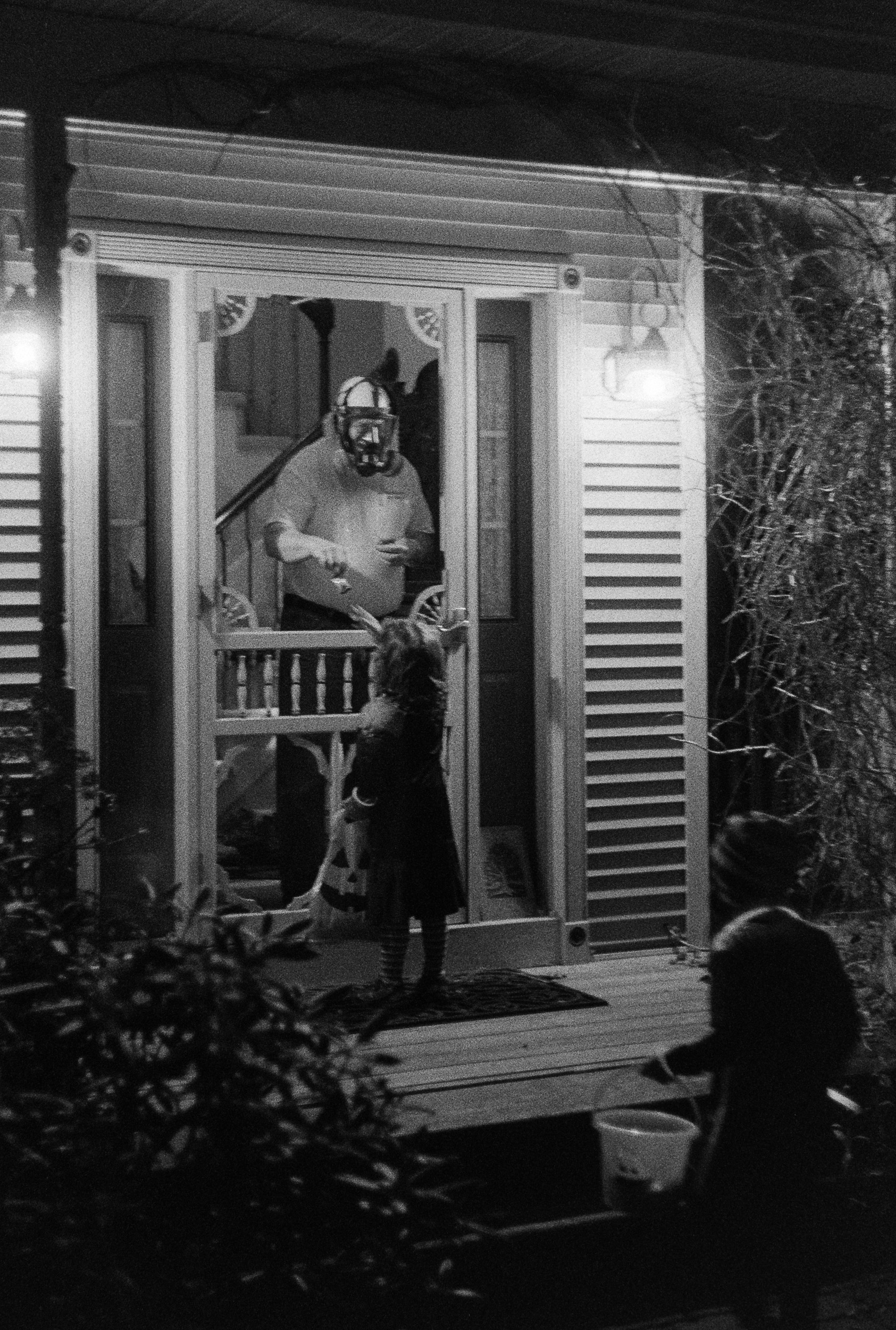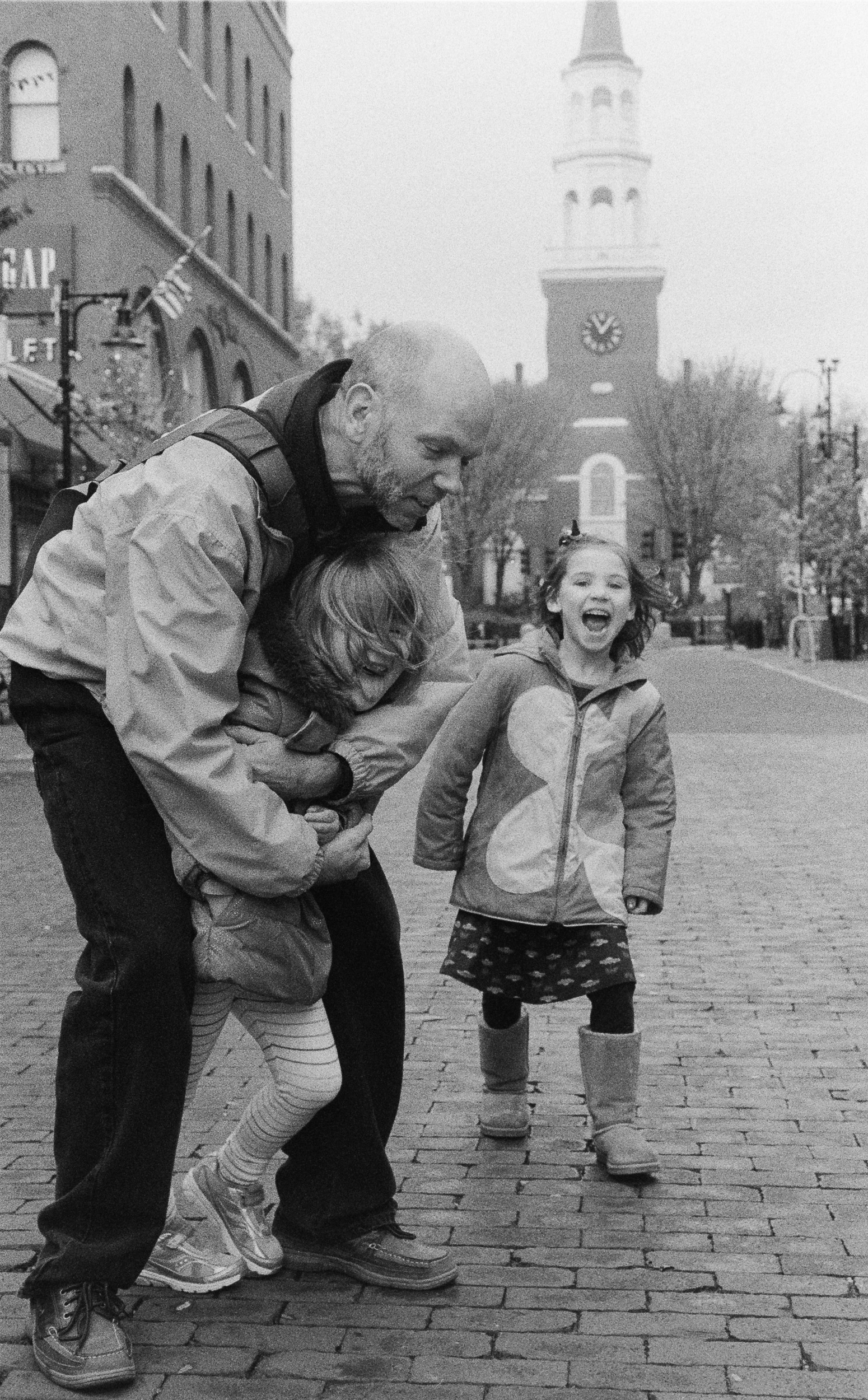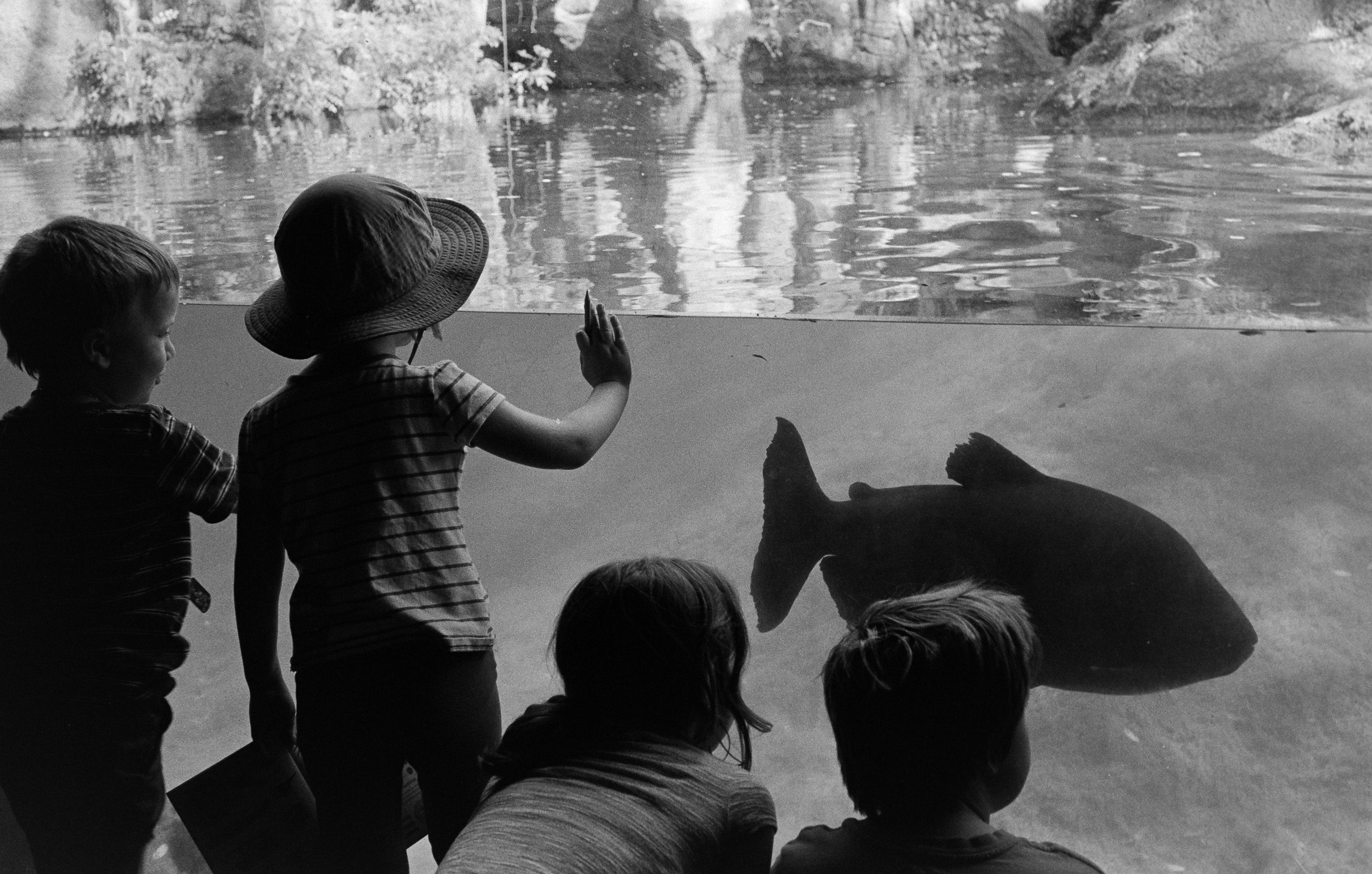I recently participated in an Eastman Museum workshop "Dry Plates in the Woods of Letchworth State Park" and had a lot of fun with that. We learned how to make a silver bromide emulsion, coated it on 4x5" glass plates and then went to the very scenic Letchworth state park in upstate New York to take photographs with these dry plates. Here are my favorite six out of the ten glass plate negatives I produced:
The first day of the workshop we stayed in Rochester, NY in the museum's underground class room / darkroom to make all the dry plates we were going to use during the week. One of the first steps was to cut 8x10" framing glass into 4x5" plates.
Nick taught us how to make a basic silver halide emulsion. Gelatin is dissolved in hot water and sodium bromide added to the mix. Then, in a series of controlled steps, a silver nitrate solution is added. This causes the precipitation of silver bromide which is the desired light sensitive crystal and which remains suspended in the gelatin. Additionally, the unwanted by-product of sodium nitrate is formed which later needs to be washed out of the gelatin.
After spending some considerable time pouring the emulsion on our glass plates and letting them dry over night, we then drove to Letchworth SP and stayed there in rather comfy cabins for the next three days. Those days were spent taking photos with the glass plates in large format cameras (I brought my trusty Graflex "Super Graphic" along), sitting around the campfire and listening to Mark playing his Banjo. I had a great time!
At the end of each photo session, we came back to camp and could develop the glass negatives right there in a portable darkroom tent. This was not too much different from developing any other kind of black&white film, except it could be done under red safelight and with only one glass negative in a tray at a time.
The emulsion we made was rather slow, roughly equivalent to ISO 1 ½. So exposure times were always in the range of seconds. And no extra sensitization was added for recording green or red light (as in orthochromatic or panchromatic film). That means the emulsion was "color blind" and only saw blue and violet light. As a result, the light meter couldn't really be trusted to come up with a "correct" exposure value and was just a starting point for guessing a suitable exposure time.
The fourth photo of my dry plate gallery at the beginning of this post shows a rainbow formed in the mist of the waterfall. Though what's visible in the photo is just the blue and violet band of the rainbow. Here is a comparison with my cell phone color photo of the same scene:












